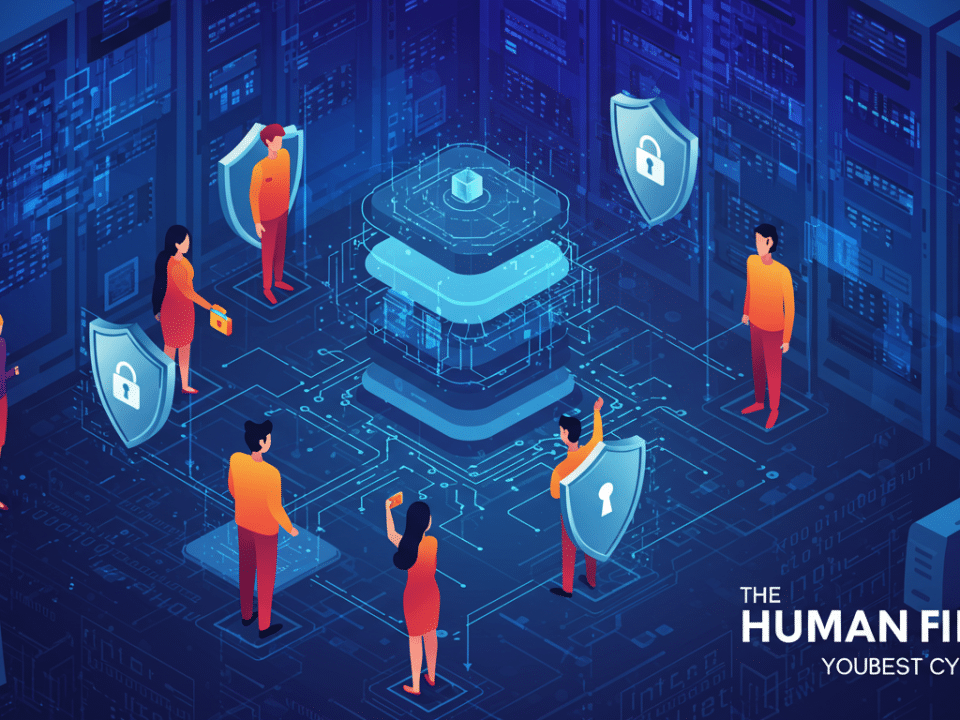
Connected Cars, Growing Threats: Navigating the Emerging Landscape of Automotive Cybersecurity
January 23, 2025
Hundreds of Fake Reddit Sites Push Lumma Stealer Malware: What You Need to Know
January 25, 2025The world of cybersecurity is a constant arms race. As defenders develop new and improved security measures, attackers relentlessly adapt, and devise increasingly sophisticated methods to bypass them. This ever-changing nature of cyber threats is arguably the single greatest challenge facing organizations today. It’s no longer enough to simply install antivirus software and a firewall – businesses must embrace a proactive, multi-faceted, and constantly evolving security posture to stay ahead of the curve.
As your trusted cybersecurity partner, Krypto IT understands the complexities of this dynamic threat landscape. This blog post will delve into the reasons why the evolving nature of cyber threats is so challenging, explore the key trends shaping this landscape, and outline best practices for building a resilient defense.
The Challenge of a Constantly Evolving Threat Landscape
The rapid pace of technological change, coupled with the ingenuity of cybercriminals, creates a constantly shifting threat landscape. Here’s why this is so challenging:
- New Attack Vectors Emerge Regularly: Attackers are constantly finding new ways to exploit vulnerabilities in software, hardware, and human behavior. The rise of IoT devices, cloud computing, and remote work has expanded the attack surface, creating more opportunities for exploitation.
- Attack Techniques Become More Sophisticated: Phishing attacks are no longer limited to poorly written emails with obvious grammatical errors. They now leverage AI, social engineering, and highly convincing fake websites. Malware is becoming more polymorphic and evasive, making it harder to detect.
- Zero-Day Exploits: These vulnerabilities are unknown to the vendor or have no available patch, giving attackers a window of opportunity before defenses can be put in place.
- The Rise of Organized Cybercrime: Cybercrime has become a lucrative business, with organized groups operating like sophisticated enterprises, complete with developers, testers, and customer support.
- Geopolitical Instability: Nation-state actors are increasingly using cyberattacks for espionage, sabotage, and disruption, adding another layer of complexity to the threat landscape.
- Skills Gap: The cybersecurity industry faces a significant skills shortage, making it difficult for organizations to find and retain qualified professionals to combat these evolving threats.
Key Trends Shaping the Threat Landscape
- AI-Powered Attacks: Attackers are using AI to automate and enhance their attacks, making them more effective and difficult to detect. This includes AI-generated phishing emails, malware that adapts to defenses, and automated vulnerability discovery.
- Ransomware-as-a-Service (RaaS): The proliferation of RaaS platforms has made it easier for individuals with limited technical skills to launch ransomware attacks, leading to a surge in these types of incidents.
- Supply Chain Attacks: Attackers are increasingly targeting the software supply chain to compromise a large number of organizations through a single point of entry.
- Attacks on Critical Infrastructure: Cyberattacks on critical infrastructure, such as power grids, water treatment plants, and transportation systems, are becoming more frequent and have the potential to cause widespread disruption.
- Cloud Security Threats: As organizations move more data and applications to the cloud, they face new security challenges related to cloud misconfigurations, data breaches, and account takeovers.
- IoT Insecurity: The proliferation of insecure IoT devices creates a vast attack surface that can be exploited to launch DDoS attacks, steal data, or gain access to corporate networks.
Best Practices for Navigating the Evolving Threat Landscape
1. Proactive Threat Intelligence:
- Stay Informed: Continuously monitor the threat landscape by subscribing to threat intelligence feeds, participating in information-sharing communities (e.g., ISACs), and following reputable cybersecurity news sources.
- Analyze Threat Data: Develop processes for analyzing threat intelligence data to identify relevant threats and vulnerabilities that could impact your organization.
- Threat Hunting: Proactively search for signs of malicious activity within your network and systems, even in the absence of alerts.
2. Adaptive Security Architecture:
- Defense in Depth: Implement a layered security approach with multiple security controls at different levels of your IT infrastructure.
- Zero Trust Model: Adopt a “never trust, always verify” approach to security, where every user and device is authenticated and authorized before being granted access to resources.
- Network Segmentation: Divide your network into smaller, isolated segments to limit the impact of a potential breach.
- Automation: Automate security tasks, such as vulnerability scanning, patching, and incident response, to improve efficiency and reduce response times.
3. Continuous Security Monitoring and Improvement:
- Security Information and Event Management (SIEM): Deploy a SIEM system to collect, analyze, and correlate security logs from various sources to detect and respond to threats in real-time.
- Endpoint Detection and Response (EDR): Implement EDR solutions to monitor endpoint activity, detect anomalous behavior, and provide advanced threat hunting capabilities.
- Regular Security Assessments: Conduct periodic vulnerability assessments, penetration testing, and security audits to identify weaknesses and improve your security posture.
4. Agile Incident Response:
- Develop an Incident Response Plan: Create a detailed plan that outlines procedures for responding to different types of security incidents.
- Establish an Incident Response Team: Form a dedicated team with clearly defined roles and responsibilities.
- Regularly Test the Plan: Conduct drills and tabletop exercises to ensure the plan’s effectiveness and identify areas for improvement.
- Incident Response Automation: Use automation to accelerate incident response processes, such as isolating infected systems or blocking malicious traffic.
5. Security Awareness Training:
- Regular Training: Conduct ongoing security awareness training for all employees to educate them about the latest threats and best practices.
- Phishing Simulations: Use simulated phishing attacks to test employees’ susceptibility and provide targeted training.
- Promote a Culture of Security: Encourage employees to be vigilant and report any suspicious activity.
Policies and Procedures:
- Information Security Policy: A high-level document that outlines your organization’s overall approach to information security.
- Acceptable Use Policy: Defines acceptable use of company IT resources and data.
- Incident Response Plan: Details procedures for responding to security incidents.
- Vulnerability Management Policy: Establishes procedures for identifying, assessing, and remediating vulnerabilities.
- Patch Management Policy: Defines procedures for applying software patches and updates.
- Data Security Policy: Specifies how sensitive data should be handled, stored, and protected.
Krypto IT: Your Partner in Navigating the Evolving Threat Landscape
The ever-changing nature of cyber threats demands a proactive, adaptive, and multi-faceted approach to cybersecurity.
Krypto IT can help your organization stay ahead of the curve. Our services include: threat intelligence, security assessments, vulnerability management, penetration testing, incident response planning, security awareness training, and the implementation of advanced security solutions. We can tailor a security strategy to your specific needs and industry, helping you build a resilient defense against the evolving threat landscape.
Contact us today for a free consultation and let us help you transform your cybersecurity posture.
Don’t be caught off guard by emerging threats. Be proactive. Be adaptable. Be secure with Krypto IT.
#Cybersecurity #ThreatLandscape #CyberThreats #InfoSec #CyberDefense #RiskManagement #ThreatIntelligence #VulnerabilityManagement #IncidentResponse #SecurityAwareness #DataSecurity #KryptoIT #SecurityBestPractices #ZeroTrust #CloudSecurity #AIinCybersecurity




